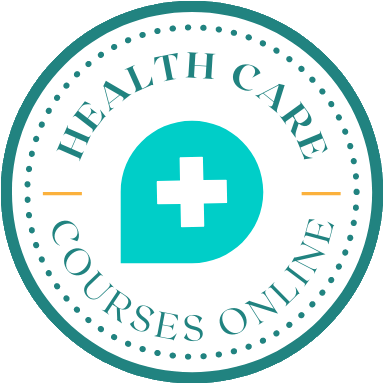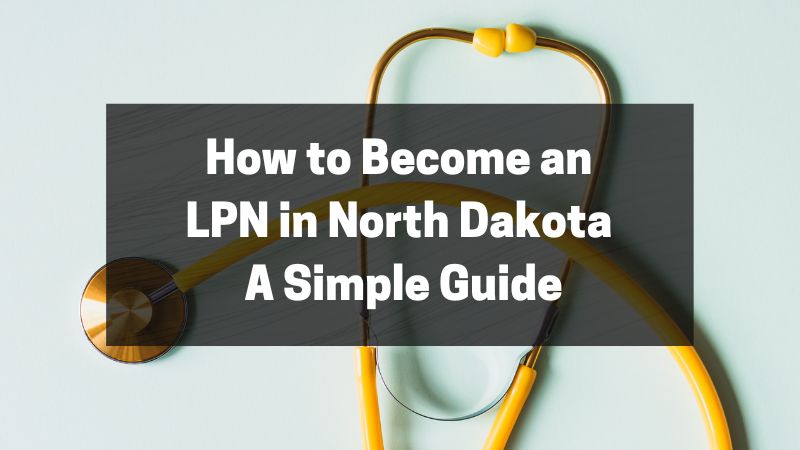Working in the healthcare industry can be a very rewarding and meaningful career.
It’s also highly in demand these days with the growing population of elderly people and the rise of chronic diseases.
Many say that becoming an LPN is your fastest and easiest ticket to becoming a nurse or to start practicing in the medical field.
While this is true (since you won’t need a 4-year degree), you will still have to finish all required studies and complete all application requirements.
So the next and more important question is – how do you actually become one?
Getting into a new profession might sometimes be challenging because you don’t know where to look, or where to start.
But you’ve come to the right place!
In this article, we’ll list down everything you need to know about how to become an LPN in North Dakota and eventually find a job.
We’ll also answer common questions that people entering the LPN profession may have.
Can’t wait to start?
Let’s get into it.
How to Become an LPN in North Dakota in 4 Easy Steps
- Step #1: Complete admission requirements
- Step #2: Enroll in a state-approved LPN training program
- Step #3: Apply for licensure and take the NCLEX-PN
- Step #4: Get your license and practice as an LPN
Step #1: Complete Admission Requirements
Just like in any other school, you need to submit several requirements before you can start the LPN program.
Although the requirements differ per school, we’re listing some of the common ones for you so you will know what to expect before you enroll.
Common requirements:
- Must be at least 18 years old
- A high school diploma or a GED certificate
- Current CPR certification
- Show proof of completion of all prerequisite courses
- Completion of the ATI TEAS exam
Step #2: Enroll in a State-Approved LPN Training Program
As mandated by the Board of Nursing, all those who wish to become nurses should finish education from state-approved programs.
Most programs offered in North Dakota require 12 months of training (if you are studying full-time) and cost from $9,500 to $13,000. This might seem like a big commitment, but it’s going to be worth it once you get your license.
If you want to see a shortlist of top schools, you can visit this site to speed up your search.
What do you study in LPN programs?
LPNs play an important role in healthcare. They are considered front liners wherever they are. From checking vital signs, assisting patients to eat, giving medications, etc. – they clearly are a big help to all patients.
To make sure they are ready for such undertakings, LPN training programs include topics such as:
- Nursing Fundamentals
- Anatomy and Physiology
- How to Assess Health History and Perform Examinations
- Growth and Development
- Infection Control and Prevention
- Patient Safety
- Medication Administration
- Intravenous Medications
- Basic Patient Needs
- Adult Medical Nursing
- Emergency Nursing Care
- Grief and Loss
- Psychiatric and Mental Health Nursing
- Rehabilitation and Restorative Care
- Gerontology Nursing
- Maternal and Natal Nursing
- Pediatric Nursing
Some topics are discussed in classrooms, others are demonstrated in laboratory and clinic sessions.
LPN students are also exposed to different healthcare settings where they receive real-life training under the supervision of an RN.
They get to practice the different skills necessary to become an effective and safe LPN.
Step #3: Apply for Licensure and Take the NCLEX-PN
There are 2 ways to apply for an LPN license – one is via examination, and the other is via endorsement.
The main difference? You take the exam if you have never been an LPN before and you apply for endorsement if you’re already a practicing LPN in another state.
Let’s discuss the first and the more common method, licensure by examination.
Licensure by Examination
All aspiring LPNs need to take the NCLEX-PN. They cannot receive a license without passing this exam.
But before you can take the exam, the Board of Nursing will evaluate if you qualify for it.
The application for the license and the registration for the examination happen at the same time.
When your educational requirements are complete, meaning you’ve finished the program and received the certification, then you can now apply to North Dakota’s Board of Nursing.
Here’s what you need to submit:
- Official transcript of your state-approved training program (this must be shared directly by the school’s registrar)
- Proof of registration for the NCLEX
- Completed application form
- Proof of criminal background check
- U.S. Social Security number
If your application for examination is approved, you will receive an ATT form.
What is the ATT?
The ATT is the “Authorization to Test” document that you receive after applying for the examination. This means you have received approval to take the exam.
In this document, you’ll find your candidate number, a list of test centers, and the testing expiration date.
If you’re set on a date, schedule it online here at vue.com/nlex.
But wait – what is the NCLEX?
The NCLEX or the National Council Licensure Examination for Practical Nurses (NCLEX-PN) is the official national test. This test evaluates if you are ready to practice as an LPN in your state.
Questions in the test are mostly multiple-choice. Other questions would be in the form of multiple-response, identification, and drag-and-drop.
The number of questions may vary from 85 to 205. For this reason, the exam will allow you up to 5 hours to finish them all.
How much is the NCLEX-PN?
The NCLEX-PN exam costs $200. However, some states would require additional testing fees. Usually, you pay for this alongside your licensure application fees.
How are questions arranged in the NCLEX-PN?
To better structure the exam of up to 205 questions, here is how topics are grouped:
Part 1: Safe and Effective Care Environment
- Coordinated Care
- Safety and Infection Control
Part 2: Health Promotion and Maintenance
- Ante/Intra/Postpartum and Newborn Care
- Data Collection Techniques
- Lifestyle Choices and Self Care
- Health Promotion Programs
- Developmental Stages and Transitions
- Disease Prevention
- Immunizations
Part 3: Psychosocial Integrity
- Coping Mechanics and Grief and Loss
- Stress Management
- Support Systems
- Chemical Dependency
- Behavioral Management
- Crisis Intervention
- End of Life Care
Part 4: Physiological Integrity
- Basic Care and Comfort
- Pharmacological and Parental Therapies
- Reduction of Risk Control
- Physiological Adaptation
With this guide, we hope you get to prepare better for the test!
Licensure by Endorsement
This process is for those who are already LPNs in another state but want to practice as LPNs in North Dakota.
It means you can apply for a license in North Dakota without having to study and take the examination again.
Here’s what you need to prepare:
- Verification of state licensure
- Official transcript from a state-approved nursing program
- Criminal background check
Multi-State Licenses
North Dakota is part of the Nursing Licensure Compact.
All states that are part of the NLC allow LPNs who have multi-state licenses to practice in their state without having to apply for a separate license by endorsement.
So, if you are an LPN who has a multistate license, you don’t need to apply by endorsement if you want to practice in North Dakota.
The opposite is also true. You can practice as an LPN in other NLC states if you have a multistate license from North Dakota.
Step #4: Get Your License and Practice as an LPN
Congratulations, you did it!
Now it’s time to put your license to good use.
Are you wondering where you can apply?
Thankfully, there are many institutions and clinics that need the help of LPNs.
You can apply in nursing care facilities, offices of physicians, general medical and surgical hospitals, and even in schools and offices.
But there are areas in North Dakota that pay slightly higher salaries versus others.
Here’s a quick snapshot of the annual salary in these different areas.

Table from PracticalNursing.Org
FAQs About Becoming an LPN in North Dakota
Now that we’ve covered the steps to becoming an LPN, let’s answer some relevant questions.
How much does an LPN in North Dakota make?
LPNs in North Dakota make an average of $46,280 yearly.
Of course, the salary will depend on the area and the hospital or clinic, but here’s a list of the average salaries in the top 3 metropolitan areas.
| Area | Total Employment | Average Hourly Wage | Average Annual Salary |
| Fargo | 880 | $21.89 | $45,530 |
| Grand Forks | 430 | $22.02 | $45,800 |
| Bismarck | 420 | $22.84 | $47,500 |
How often do I need to renew my LPN license and what are the renewal requirements in North Dakota?
You will need to renew your LPN license before December 31st every two years.
You are required to accomplish 12 contact hours every 2 years.
Once this is done, you can apply for renewal online and pay $130 for the renewal fee.
Are LPNs in demand in North Dakota?
There is high demand in North Dakota. In fact, there is a high vacancy rate in the state where small rural facilities are at a 12.6% vacancy rate, and urban facilities are only at 5.6%.
So for aspiring LPNs like you, we can say that there’s a high chance for you to find a job soon.
Conclusion
Becoming an LPN is a faster and easier way to get into the medical and healthcare industry.
But to get a license, you need to fulfill all of North Dakota’s requirements and commit to at least 1 year of study!
If you commit to training and completing each of the steps indicated above, then there’s no doubt you’ll become an LPN in no time!
We wish you all the best!

